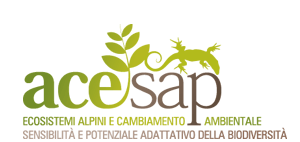BIBLIOGRAFIA |
| YOUNGS H.L., GRETZ R.M., WEST J.A. SOMMERFELD M.R. |
| 1998 |
| The cell wall chemistry of Bangia atropurpurea (Bangiales, Rhodophyta) and Bostrychia moritziana (Ceramiales, Rhodophyta) from marine and freshwater environments. |
| PHYCOLOGICAL RES. |
| JAPANESE SOCIETY OF PHYCOLOGY, 1998. |
| 46(1):63-73 |
| BOTANICA |
| The cell wall polysaccharides of two species of red algae, which are adapted to both freshwater and marine environments, were analysed to determine the effect of these widely different environments on their commercially important agarocolloids and to investigate the possible role of the cell wall in environmental adaptation. Cell wall polymers of freshwater isolates of Bangia atropurpurea (Roth) C. Agardh and cultured freshwater and marine Bostrychia moritziana (Sonder ex Kützing) J. Agardh were isolated and the polysaccharides chemically fractionated and characterized. Wall polysaccharides of freshwater B. atropurpurea were similar to those previously reported for marine isolates with repeating disac-charide units of agarose and porphyran predominant in the hot water extracts. In the insoluble residues, 3-iinked galactosyl and 4-linked mannosyl residues were predominant. Bostrychia moritziana wall polysaccharides included agarocolloids with various patterns of methyl ether substitution similar to those previously described for other Ceramiales. Differences in the position of methyl ether substituents were detected in the hot water extracts of the freshwater and marine specimens. Polymers of freshwater ß. moritziana cultures were composed of a complex mixture of repeating disaccharide units including 2'-O-methyl agarose, 6-O-methyI agarose and 2'-O-methyl porphyran. Polymers of marine isolates of ß. moritziana differ in that they contain only trace amounts of 2-O-methyl saccharides and increased amounts of 6-O-amethyl saccharides. The hot water insoluble residues of both freshwater and marine isolates of ß. moritziana contain a mixture of 3-linked galactosyl and 4-linked glucosyl residues. These results indicate that the adaptive response of B. moritziana to changing osmotic and ionic conditions may include changes in cell wall chemistry: notably, the pattern of methyl ether substitution. |
 The cell wall (file pdf, 5.568 KB)
The cell wall (file pdf, 5.568 KB)





